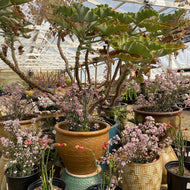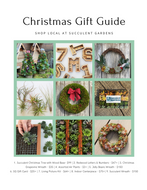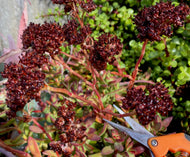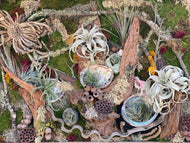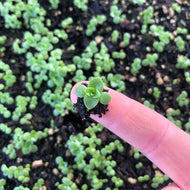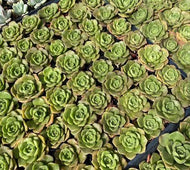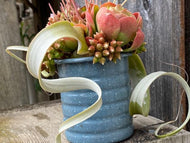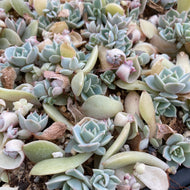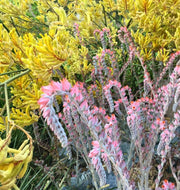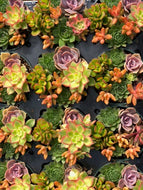As a farmer, I am always aware of the weather and the issues we face during the different seasons. In our area on the Monterey Bay there are many different microclimates that present different challenges for the gardeners in each. We seldom freeze, but it seems we have frost annually several times a year. In the past 10 years we have had 2 freezes that went to 25 degrees Fahrenheit.

The freeze is coming, so what to do?
These photos are from today at the nursery where we have been covering the more tender succulents to protect them from what looked like a potential for freezing weather. The prediction is that the usual colder areas of the Central Valley will have freezing temperatures tonight, Tuesday, December 3. Tomorrow night, Thursday morning, the freeze is predicted to move to areas like the coast side where it seldom freezes.
We use frost cloth. Frost cloth can be found online, and, in California, Hydroponic stores are pretty reliable and some of the box stores have this as well.

How cold will it get and what does it matter?
Most freezes in our area are of short duration, i.e. the temperature only goes below freezing for a couple of hours in the morning. For the most tender plants, this type of freeze can burn leaves, but generally does not damage the plants beyond that. A sustained freeze, one the goes below freezing for long hours and even several days, is where the most damage occurs even to the point of destroying plants.
The frost cloth in these photos has worked well for us during the colder freezes. It comes in different weights (thicknesses) and the heavier material is said to provide between 4 and 8 degrees of protection. This material works better than things like sheets or blankets for several reasons. It allows light to go through the material so the plants continue to photosynthesize and grow. It is also very lightweight and, as a consequence, does not damage the plants as much. We anchor the material with string and tent stakes. Plastic like visquine is not very good for protecting plants from freezes. If you have ever worn a pair of unlined rubber boots in the snow you will know why. The frost fabric will last for many years if it is stored out of sunlight when not in use. If left throughout the year in direct sun, it will deteriorate rapidly from the UV exposure.
What if I need more protection?
Some people place a strand of Christmas lights under the cloth to add heat to the area. I've never done this, but have heard it works quite well. I would caution anyone doing this to be careful to not have the lights in contact with the material. At Ruth Bancroft Garden in Walnut Creek they have portable cold frames to put up over their more tender plants.
What plants are hardy?
- Aloes and Agaves are generally good to 26F. Agave attenuata varieties are all 32F frost tender. Not all Aloes and Agaves handle the lower temperatures. Google the plants you have for more accurate info.
- Crassula generally need to be protected from temps below 32F.
- Echeverias vary widely. Some are quite hardy down to the teens while others are sensitive to anything below 32F.
- Sempervivums are generally hardy below the teens.
For the best way to prepare for freezes, always try to get the names of the plants you grow so you can look up additional information through Google, Sunset, and other plant guides.
Each season offers unique challenges to gardening with succulent plants like any other plants. Follow my newsletter to keep up with issues relative to the different seasons.
UPDATE: 12/5/13
Quite a few people have asked about the frost protection fabric I use, what's it called and where do you get it? I googled, frost protection fabric and came up with quite a few places that carry it. Amazon.com carries Agribon, the brand that we are currently using. Harris Industries' website is one of the places I went to on line that is a manufacturer with a description of the material, how to store it, and how to place it on plants. We do not anchor it with dirt as they show, but instead tie it to tent stakes, or set something heavy at intervals on the edge.
There are a number of ways in which I track weather, but no one source is foolproof. I rely on our national weather service NOAA National Weather Service, which has a place to enter your zip code to see your local predictions and conditions. I have always been fascinated by weather and rely a lot on my own intuition, combined with NWS and my favorite local weather forecasters. Freezes for us have varied from wet freeze to dry freezes. The one we are having now is a dry freeze. I think succulents generally tolerate a dry freeze best. Cold tends to settle into lower spots, so people who live in canyons tend to get colder than folks on hillsides. North-facing tends to be the colder of the exposures as there is little sunlight shining on the northern exposure.

